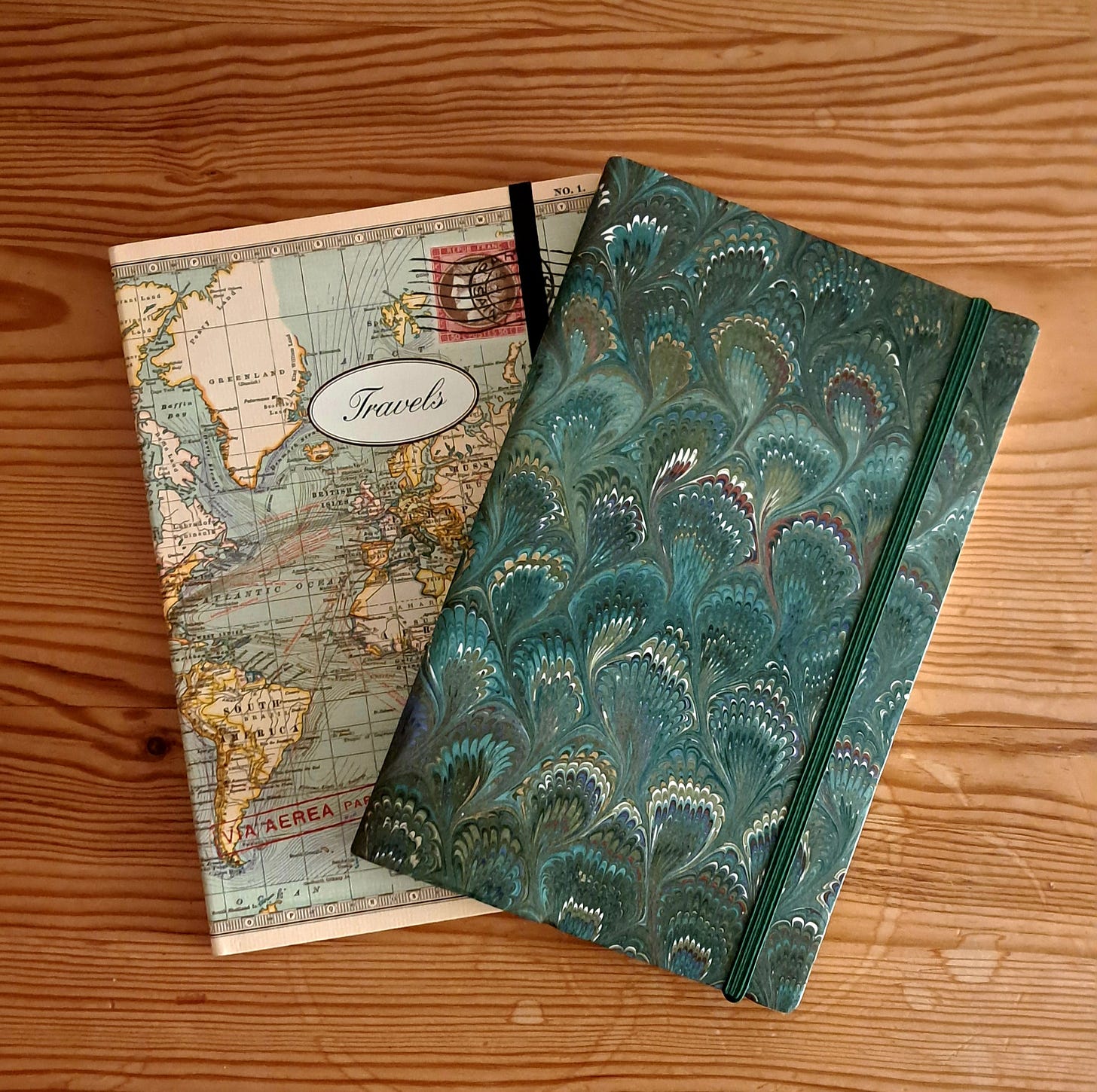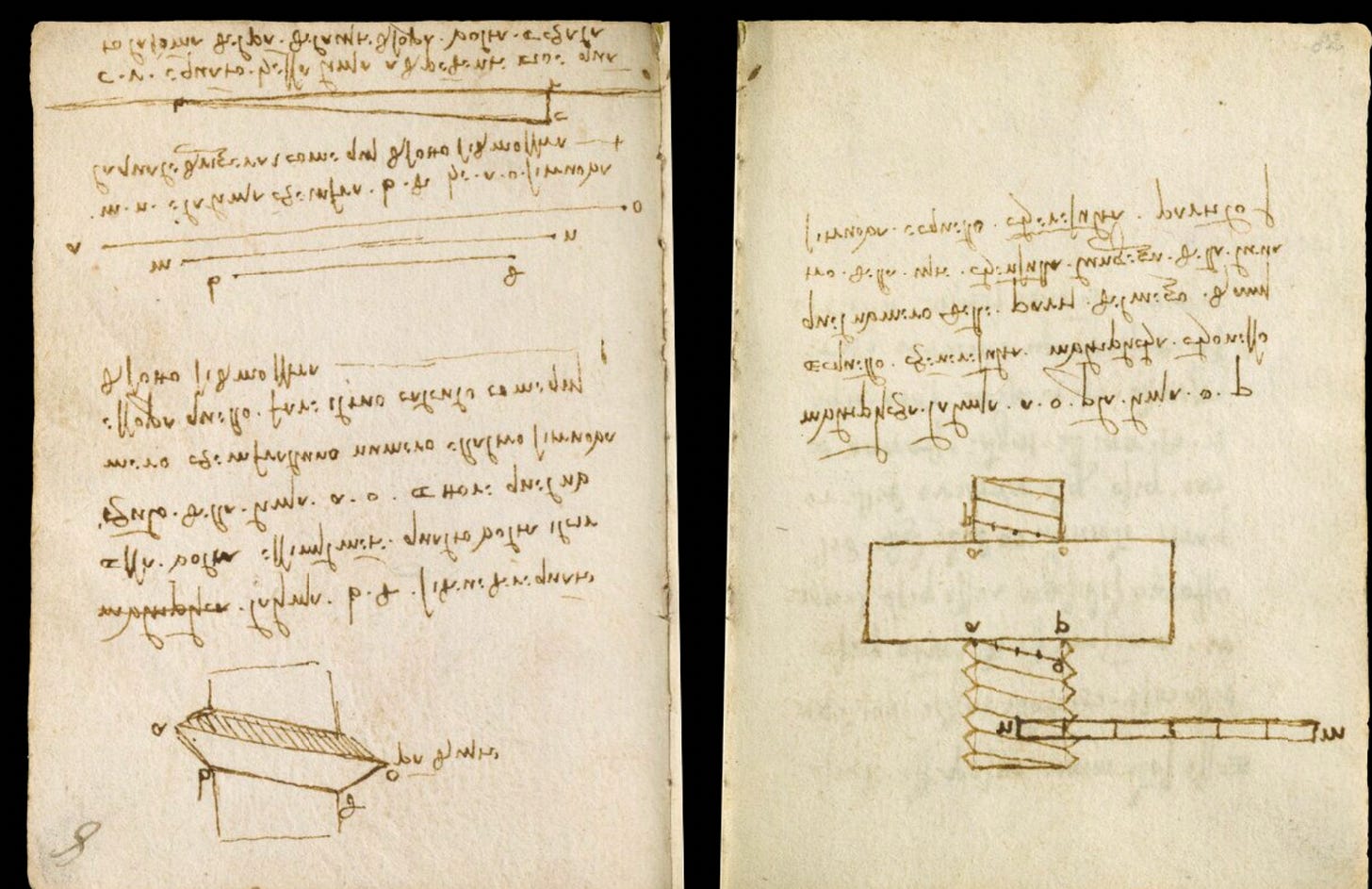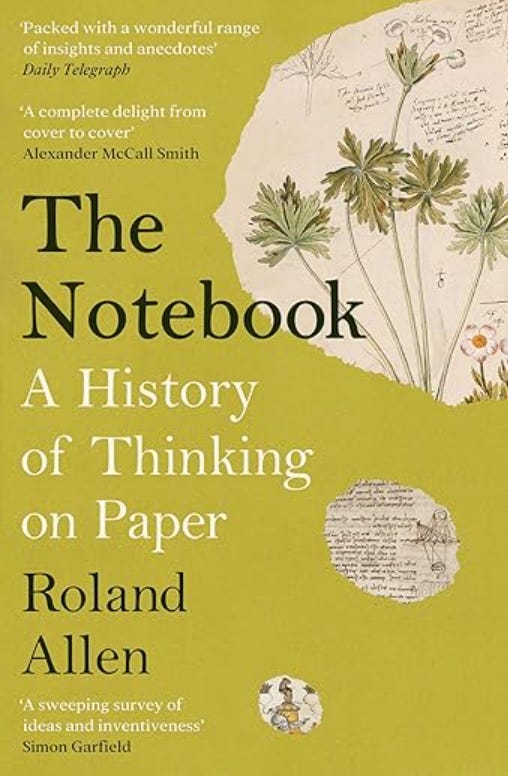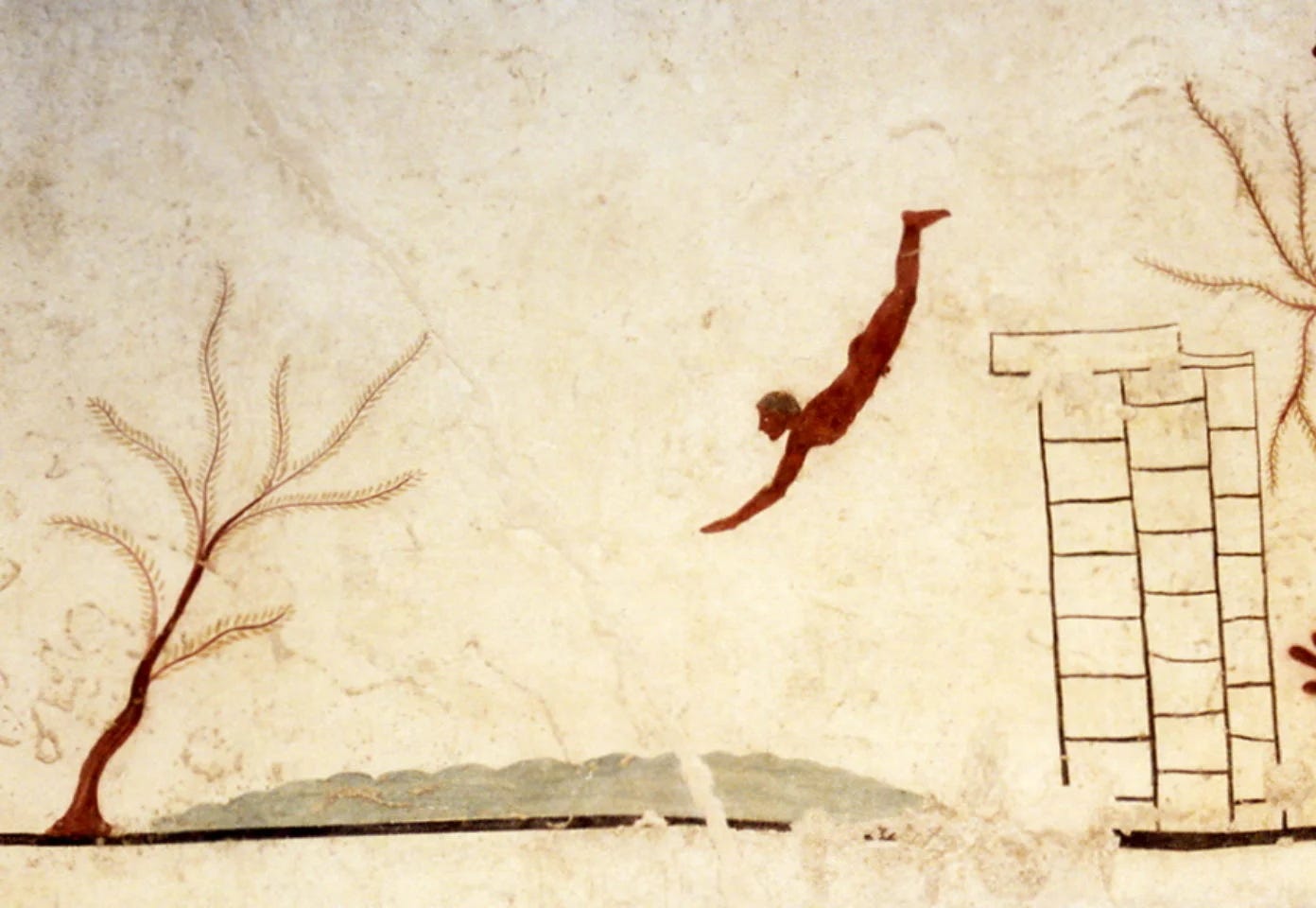An ode to notebooks
Doodle for posterity like Leonardo...
Hello! Thank you so much for opening today’s Myriatid. As ever, I’m immensely grateful for the space you allow me in your inbox and brain. This week, I’m imploring everyone to use notebooks, taking inspiration from Leonardo da Vinci, and looking at an ancient diver from Paestum. I hope you enjoy…
There’s a special sort of magic that happens in cracking a saddle-stitch spine and choosing – for absolutely no reason – to write halfway down a page.
In last week’s post, I wrote about the works of art we stow in our memories for comfort and reflection. This week has brought reflection’s natural by-product: writing.
I’ve been scribbling in all its forms. Erratic phrases. Unbalanced sentences. Lists. Exclamations (!). Questions upon unanswered questions… you name it.
I didn’t type anything. In today’s world, we’ve been conditioned to believe that digital words are in the safest hands. They’ll last forever in cyberspace, stored in a soulless, unimpeachable server. Calibri, Times New Roman, Arial and all: the fonts through which our descendants will one day read our lives.
I disagree. Just this week, my mum’s iphone notes disappeared without a trace. Whoosh! Gone. Shopping lists, plans, thoughts about the future – no more. I googled it and found this is a widespread glitch. Also, my Google Drive is getting full. I’m receiving “pay now or lose everything” notifications. I’ve downloaded my novel drafts just in case.
You know what isn’t stress-messaging me? My notebooks.

When I was a teacher, I had a notebook per school year – I still have each one (black A5 moleskines). Now, as an author, I have a notebook for each novel I write and a “random thoughts” book which I keep with me at all times (currently it’s an aesthetically disappointing A4 black coil bound…soon to be updated). Sure, these can be left on a bus. However, they can’t be whipped away into the digi-aether.
There’s also something numinous about handwriting. This week, I was lucky enough to visit the Royal Academy’s Renaissance Masters exhibition and was enraptured by Leonardo da Vinci’s tiny little sketchpad.
In research for an abandoned novel, I read the published versions of Leonardo’s notebooks (yes, they have survived, unlike my mum’s iphone notes). They take you into his undulating mind, the spur-of-the-moment ideas and thoughts and mistakes and genius.
One moment he is designing machinery and solving equations; the next he is sketching absent-mindedly. This sort of off-the-cuff process can only happen between hand and paper (or papyrus or parchment or, going further back, wax). Word processors encourage structure and forethought.
The experience is heightened when viewing (or reading, depending on how your Renaissance Italian is) these notes in his own handwriting. The V&A holds three volumes of what are called The Codex Forster – bound books – which you can read online here (definitely do this right now). Mysteries present themselves (why does he write right to left?) and insights are gained (I am being presumptuous, but, having pored over these, I’d like to think his sketches come as moments of relief from mathematical formulae).
I will always use my laptop for writing novels – I’m not entirely impractical. However, I’d like to make a case for handwriting and notebooks. There’s a special sort of magic that happens in cracking a saddle-stitch spine and choosing – for absolutely no reason – to write halfway down a page. I also love flicking through old thoughts: something I never do with old computer or phone documents.
If a historian, one thousand years from now (I hope there is still history!), happens upon my odd and scattered notes, I hope they can, at least, find delight in my messy handwriting, my choice of paper, and my lop-sided doodles. Surely, these are worth something?
Randle recommends
When I was planning this article, I came across The Notebook: A History of Thinking on Paper by Roland Allen. I’m halfway through and enjoying it – if you, like me, have a notebook fetish, then you might enjoy it too!
Also on the Myriatid agenda this week
About 60 miles from Naples is Paestum, where this image was frescoed as a tomb decoration in around 500BC. It’s known as the Paestum Diver.
The story this week is that its “mystery” has been solved. Until now, nobody knew what this strange headlong man stood for: is he allegorical? A symbol of diving into the underworld? Now, archaeologist Tonio Höschler has argued that, contrary to popular academic belief, this diver is just…a diver. Simple.
However, what caught my eye was the image itself. I was pleased to be reminded of it. This is very much how I’m feeling this week: reflection is over, so is stunned silence. I’m writing. I’m note-taking. I’m taking the plunge in thought and spirit!









Another lovely post, and please stop with the interesting book recs! My TBR is overflowing, and I really want to get to that Elif Sharak book you've already recommended.
I too love notebooks, but I'm a notorious cheapskate when it comes to spending money on good ones. But there is something so luxurious and special about some of them.
Over the years, I've received some lovely notebooks as gifts, though most of them are probably not so expensive (which is absolutely fine! they are still so lovely!). I've also received some stinkers - a spiral bound, bland old thing.
As a sort of middle-brow (if that's a word?) option, here in Vienna I've treated myself and bought gifts for others somewhat lovely notebooks from museum gift shops.
I'm a disorganised mess with notebooks - they're scattered all over the place, some thoughts here, some thoughts there.
I'm blabbering again (as usual)!
Physical notebooks are really special. Thanks for writing this love letter about them. <3